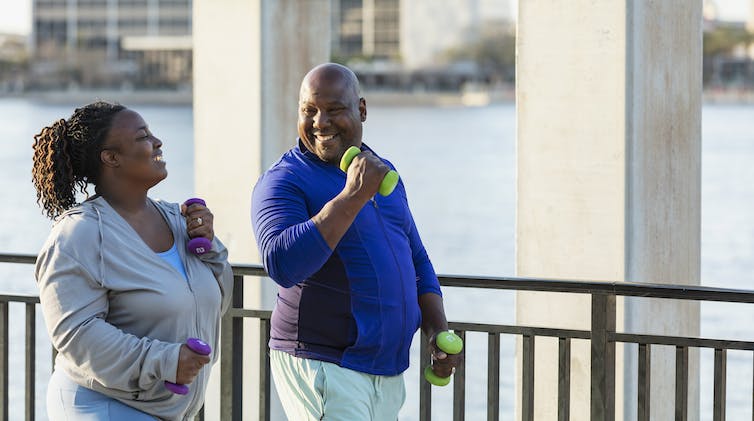When you enter the gym, which way should you head first? Toward the treadmills and spin studio to get your sweat on with a cardio session? Or toward the free weights and strength-training machines to do some resistance training?
The American College of Sports Medicine suggests doing both types of exercise to take advantage of their unique benefits for improving health and daily functioning and reducing chronic disease risk. But what is the optimal sequence to get the best results?
The answer to this question is … it depends. I’m an exercise physiologist. Recently in my lab we have been studying the effects of combinations of aerobic and resistance training on improving health-related fitness, particularly aerobic capacity and muscular strength.
Research suggests that when you’re designing your exercise program, there are a few factors to take into account, including your age, fitness level and exercise history and goals. You’ll also want to consider the volume of your exercise routine – that is, its duration and intensity – and how you’ll schedule your training during the day.
Benefits of exercise
First, just about any exercise at all is going to be better for you than doing nothing.
Aerobic exercise is rhythmic activity that gets your heart pumping. Examples are walking, running, swimming, cycling and using a cardio machine such as an elliptical trainer.
Aerobic exercise can improve cardiorespiratory function – over time, your heart and lungs get better at delivering oxygen to your muscles to make energy for continued muscle contractions. Aerobic exercise can also reduce several chronic disease risk factors, increase how much energy your body uses and how much fat it burns, and improve physical and cognitive function.
Resistance training involves strengthening your muscles by lifting, pushing or pulling against resistance. This type of exercise can be done using free-weight barbells, dumbbells, kettlebells, weight machines or even elastic bands.
Resistance exercise improves muscular strength, endurance and the power and the size of muscles – what exercise physiologists call muscle hypertrophy. Studies show resistance training has health-related benefits, as well, particularly for people who have or are at risk of developing Type 2 diabetes. It can improve blood pressure, blood levels of glucose and the ability of muscles to use glucose for energy, and it helps maintain lean body mass and bone health.

Many people work out with the main goal of staying healthy.
kali9/E+ via Getty Images
Training for health benefits
With a limited amount of time to devote to working out, many people include both cardio and weights in the same exercise session. This concurrent training comes with plenty of benefits for your health, including lowering your cardiovascular and metabolic risks.
In fact, doing both forms of exercise together is better, especially for people with chronic disease…



